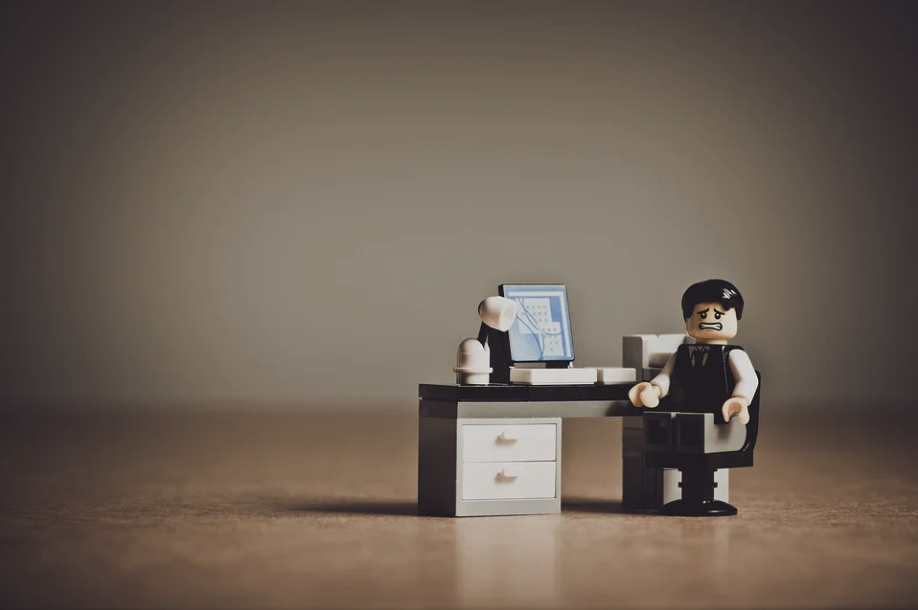
Like so many of life’s pains and discomforts, the coronavirus pandemic has led many of us to seek distraction. We know, or at least hope, it will be temporary. So, we turn away and wait for the difficult times to pass. One moment it was Pelotons, and another moment it was (and is!) Wordle.
There is nothing inherently wrong with this strategy. For many things it is just fine. But we can see where sometimes it becomes a habit. And this can be destructive for our wellbeing.
Know when to distract and when not to

Distractions are okay. Little joys in life like a cupcake or our favorite TV sit-com bring well-deserved joy. They also can offer a break from our chaotic lives.
But as with so much in life, balance is key. We can easily tip into addiction. With addiction, we crave that next bite or episode. We find that we’re enjoying it less and less. Instead, each new “fix” only removes the pain of craving.
And there are bigger issues that these little joys might distract us from. When we’re feeling bad about our health or finances, do we turn to sugar and television? When we’re having trouble with our spouse or family, do we turn away and dive into alcohol or sports?
Remember the power of habit
Just as starting and keeping up good habits can slowly and steadily build a healthy, fulfilled life, habituating ourselves to lots of distractions can lead us down a dark road. All of us are mixed bags of good and bad habits. Some of these are new to us. Many go back to our childhood or adolescence.
Remembering this, we might go easy on ourselves as we start to think about the many not-so-great habits we have right now. The world can be a hard place. As always, this is especially true for people of color, for LGBTIQ folks, the neurodivergent, and others who just don’t fit in.
I often think of the quote attributed to the Indian philosopher and mystic Jiddu Krishnamurti (1895 – 1986): “It is no measure of health to be well adjusted to a profoundly sick society.”
When we look around at who seems successful and happy in our world today, we see a fair number of people who turn out to be profoundly unhappy. And many of these folks fall from their high status over time. Many of us might fanaticize about being rich and famous, but we should know that many wealthy and famous people are no happier than us now.
If we focus our energy on acquiring status in an unhealthy society, then at the end of it all, we might find ourselves simply older and more tired, but no happier.
Being present for joy
This is where a regular meditation practice can come in. Starting a practice takes just minutes each day. And the longer you practice, the more it filters out into your life more fully.
It doesn’t require a yoga matt or meditation cushion. You can start meditating in an office chair, on your couch, or even standing up. All you need is your breath.
We can try a quick meditation now: just read these instructions and then follow them for a few breaths. Let your gaze turn down, looking just over the ridge of your nose. Or close your eyes. Breathe in slowly and deeply. Try to breathe into your belly, feeling it expand out as you inhale. Exhale slowly and deeply, feeling your belly contract in. Repeat a few times, getting comfortable with the deep, slow breaths.
Breathing, step two
If you have one more moment, try the next step. Do all of the above, but try to focus your attention on the point where the breath is first felt coming into your body. This might be at the nostrils. Or the top of the nose. Or the back of the throat. Just pay attention to that spot with each inhale. And do the same with each exhale. Still breathing deeply and steadily. Just watching at one point where the breath comes in and goes out of the body.
Pretty easy, right? Or perhaps not. Perhaps this exercise alone opens up a flood-gate of not so great habitual impulses. That’s okay. You’ve made a start. You’ve meditated today.
The key is consistency. Try to do this every day. If you need to re-read this blog post every day, do so. Come back and simply read through and follow the instructions.
Noticing habits, step three
When you’re ready to go a bit further, try step three. Here we do all of the above and we wait for those distractions or habits to pop up. We can imagine our mind being an open field in nature. We’re focusing it on the breath: imagine a beautiful rock formation at one edge of the field. That’s what we’re watching for now.
But, without fail, other things will come in. Perhaps a bird, a deer, or a bear! These are how we can imagine the impulses pulling us away from our point of focus. That sugary snack, that conversation we want to return to, social media, whatever it is, we can note that it’s there and then go back to the breath, the beautiful rock formation.
In our meditation practice, this is how we get stronger. Pulling our focus back to the breath, over and over, strengthens the muscle of attention and focus. Like working out at the gym, we’ll start to see and feel results in a few weeks. It’s not instant, but it happens.
Letting the joy in

Sort of like the enigmatic Leonard Cohen line, “there’s a crack, a crack in everything, that’s how the light gets in,” we can find that it is in the gaps between distractions that joy gets in. I’ll write more about that in a future post.
 Justin Whitaker, Ph.D., holds a doctorate in Buddhist ethics from the University of London. He has given lectures, and taught Buddhist studies and Philosophy at Oxford University, the University of Hong Kong, the University of Montana, and at Antioch University’s intensive study-abroad program in India. A certified meditation teacher, he is a regular contributor to Patheos.com, and Senior Correspondent for Buddhistdoor Global. He lives in Missoula with his family.
Justin Whitaker, Ph.D., holds a doctorate in Buddhist ethics from the University of London. He has given lectures, and taught Buddhist studies and Philosophy at Oxford University, the University of Hong Kong, the University of Montana, and at Antioch University’s intensive study-abroad program in India. A certified meditation teacher, he is a regular contributor to Patheos.com, and Senior Correspondent for Buddhistdoor Global. He lives in Missoula with his family.
